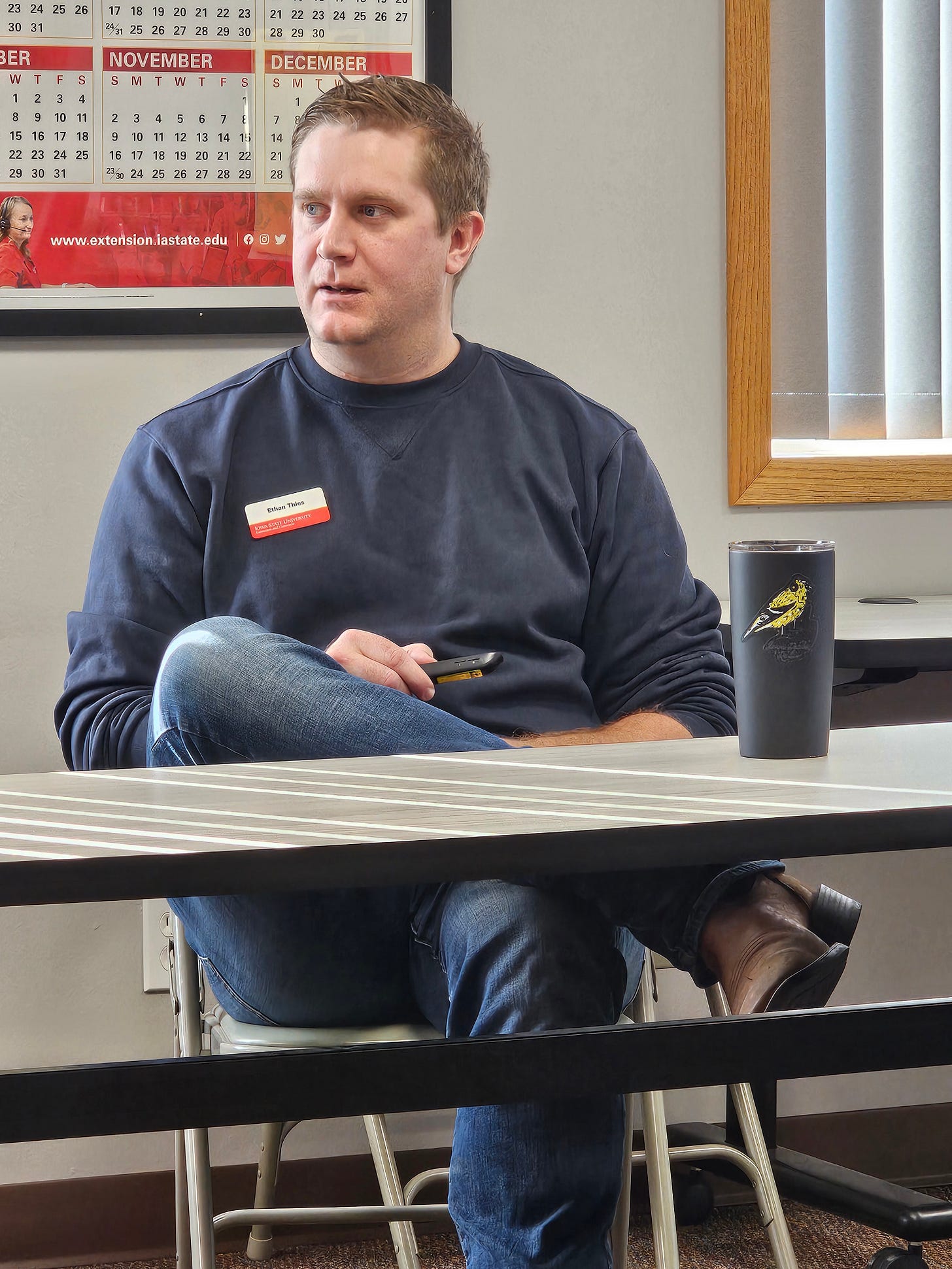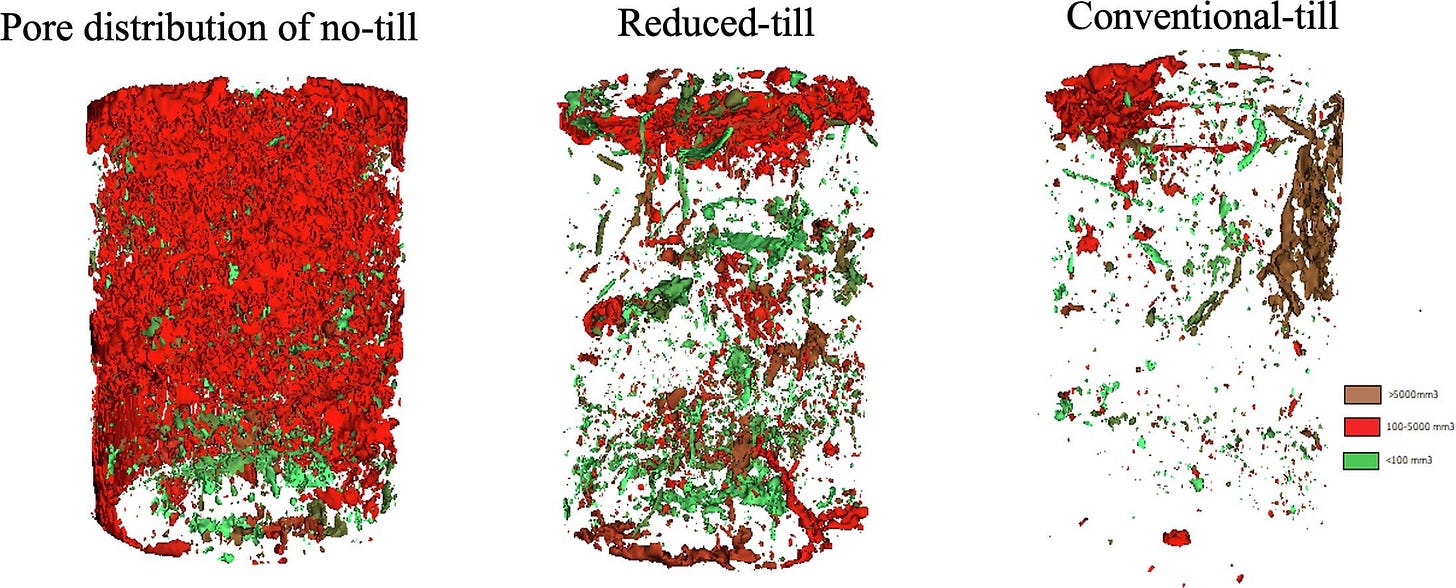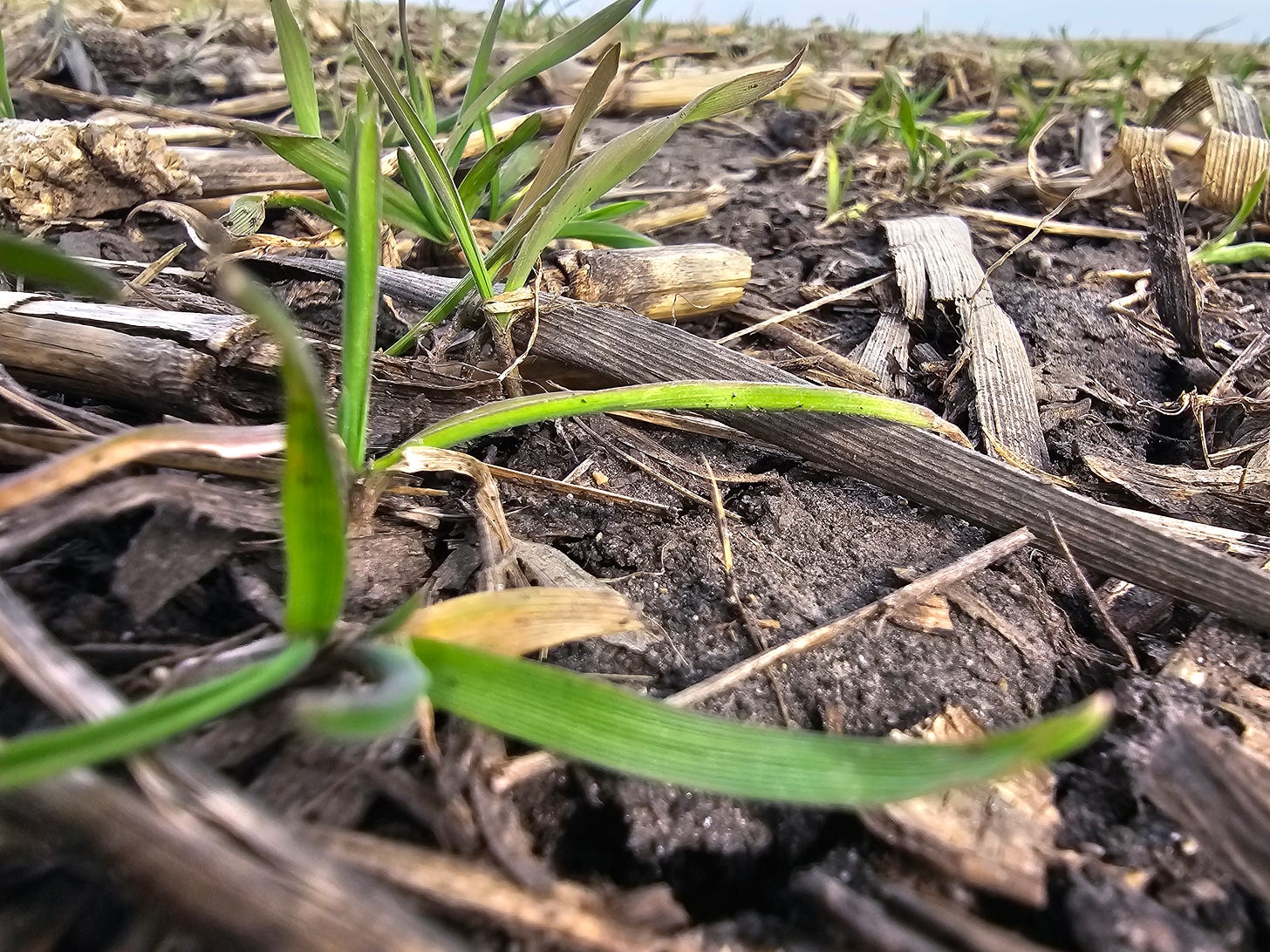Iowa's Future Depends on 4 Principles of High-Functioning Soils
Our rich, black soil is one of the most precious assets Iowa has--and it's important for anyone who owns or manages land to know how to care for it properly.
There was a time when no farmer could fathom working without a plow. That was true when the pioneers pushed west into Iowa. In 1837, plowing took a huge leap forward after John Deere invented the first commercially successful, “self-scouring” steel plow that solved the challenge of sticky prairie soil clinging to traditional cast-iron plows.
In 2023, however, Deere stopped production of its 3710 moldboard plow—186 years after Deere’s original invention revolutionized Midwestern farming. While moldboard plows were still common on farms across the country into the 1960s and 1970s, times were changing by the 1980s, as more farmers switched to no-till and various forms of conservation tillage. As time went on, the plow became increasingly obsolete in light of many of today’s agricultural practices.
“There’s still a lot of tillage out there that we can reduce,” said Ethan Thies, a conservation field specialist with Iowa State University Extension.

Reduced tillage is one of the keys to improving soil health, noted Thies, who led a conversation about soil health during an Extension meeting in Jefferson this winter. These management practices are becoming even more important in an era of extreme climate events, from derechos to drought. Concern about protecting the soil isn’t a new concept, though.
In 1937, President Franklin D. Roosevelt wrote a letter to every state governor in America, making the case for effective soil management. “The nation that destroys its soil destroys itself,” he emphasized.
This bold claim is still valid 88 years later. Soil isn’t an inert growing medium. It’s home to billions of beneficial bacteria, fungi, earthworms and other organisms that work together create an intricate, symbiotic ecosystem. When this system is working well, the benefits are tremendous, noted the Natural Resources Conservation Service (NRCS) in its “Unlock the Secrets of the Soil” publications.
Healthy, functioning soils can cycle nutrients effectively (that means “free fertilizer” for crops), provide good aeration to promote root growth, reduce runoff and erosion, offer greater resilience to drought, heavy rainfall events and temperature extremes, and improve the farm’s profit potential.
“Only living things can have ‘health,’ so viewing soil as a living, breathing ecosystem reflects a shift in the way we view and manage our nation’s soils,” NRCS said.
The concept of managing soil health shares some similarities with human health, Thies said. “There are basic principles that are essential to human health, like eating right, exercising and getting enough sleep. There are also some basic principles that help keep soil healthy.”
4 big benefits of healthier soils
Improving soil health is key to long-term, sustainable agricultural production, according to NRCS, which notes that:
· Healthy soil holds more water and loses less water to runoff and evaporation.
· Organic matter builds as tillage declines and plants and crop residue cover the soil. (NRCS defines reduced tillage as 40% or more of residue left on the soil, Thies said.) Organic matter holds 18 to 20 times its weight in water and recycles nutrients for plants to use.
· Just 1% of organic matter in the top 6 inches of soil holds approximately 27,000 gallons of water per acre.
· Most farmers can increase their soil organic matter in three to 10 years if they adopt soil-health practices to achieve this goal.
Reduce tillage, add cover crops
Improving soil health starts with four key principles:
1. Minimize soil disturbance. A soil disturbance can take a variety of forms. Physical disturbances come from tillage or compaction from heavy machinery. Biological disturbances can include over-grazing by animals, which can lead to compaction and a reduction in perennial root systems.
To minimize soil disturbance, use rotational grazing, pasture, no-till, strip-till or other forms of reduce tillage, Thies said. This is a major switch from the advice the U.S. Department of Agriculture shared in 1954 in its educational booklet “Plowing with Moldboard Plows,” which described various types of plows and attachments, plow adjustments and more. Plowing didn’t come without a cost to the soil. “When I was going to school in the late 1950s, the dust was so thick at certain times of the year that the lights needed to come on in the daytime,” said Tom Safley, a Jefferson-area farmer who attended the soil health meeting. “Also, the dust was so bad sometimes that it cut the young corn off.”
Minimizing disturbance to the soil is important to create a habitat that nurtures the beneficial soil microbes that build healthy soil. “You wouldn’t want someone knocking down your house every fall and forcing you to rebuild it,” said Thies, referring to fall tillage.
How much impact does tillage really have on the soil? In 2024, University of Nebraska-Lincoln researchers published a study that assessed the impact of long-term tillage and crop rotations on soil’s physical properties, including the characteristics of the pores in the soil.
Soil pores—the spaces between soil particles—are crucial for plant growth. They influence water and air movement in the soil, along with nutrient availability, plus they provide habitat for beneficial soil microorganisms.
The scientists used the X-ray Computed Tomography (XCT) technique, which is like a “CT scan” of the soil, to study soil pores in various farming systems. The study was conducted near Concord in northeastern Nebraska, just west of Sioux City. The scientists used computer technology to produce a 3-D visualization of pore distribution in soil samples at various depths with a variety of tillage systems, including no-till, reduced tillage and conventional tillage. The fields included corn-soybean rotations, as well as continuous corn.

The researchers observed the highest number of macropores (large pores) in the no-till samples, due to organic matter accumulation, good soil aggregation and less compaction.
2. Cover the soil. Maximizing soil cover can include a living plant canopy such as a growing crop, cover crops, perennial crops or grassland. It can also mean leaving more crop residue to cover the soil after harvest. “Maximizing soil cover helps reduce erosion, reduces evaporation, regulates soil temperature and provides food and habitat for soil organisms,” Thies said. Don’t underestimate the power of raindrops to dislodge soil, he added. Larger raindrops, for example, can fall as fast as 20 miles per hour. “This can dislodge soil particles up to 3 feet,” said Thies, who noted that maximizing soil cover can help curb the soil-eroding power of these raindrops.
3. Maximize the presence of living roots. Continuous, living roots from perennial crops to pasture to cover crops can provide a number of benefits. Living roots in the soil increase water infiltration in the soil, which helps reduce runoff and protects water quality. Living roots also reduce compaction, build beneficial soil aggregates, and provide food and habitat for beneficial soil microbes. Iowa farmers continue to add more cover crops to their acres. Around Black Hawk Lake in Sac County, about 25% of the fields around the lake have cover crops, Thies said.

4. Encourage more biodiversity. To boost soil health, it’s important to increase biodiversity through diversified crop rotations, cover crop mixes and the proper integration of grazing animals onto the landscape.
All these soil health principles can be summarized with two big concepts—protect the soil, and feed the soil. “While we’ve come a long ways with soil health, there’s room for improvement,” Thies said. “I encourage you to pick one soil health management practice to focus on this coming year. Then pick another soil health practice to implement the next year. Keep learning.”
Have you explored the variety of writers in the Iowa Writers’ Collaborative? They are from around the state and offer an intriguing variety of perspectives, focused on Iowa and the Midwest. Please consider a paid subscription. It helps keep us going, and it keeps you in the know. Thank you!





Thanks for this, Darcy~
Yes, I agree with Mary. All good basic information!